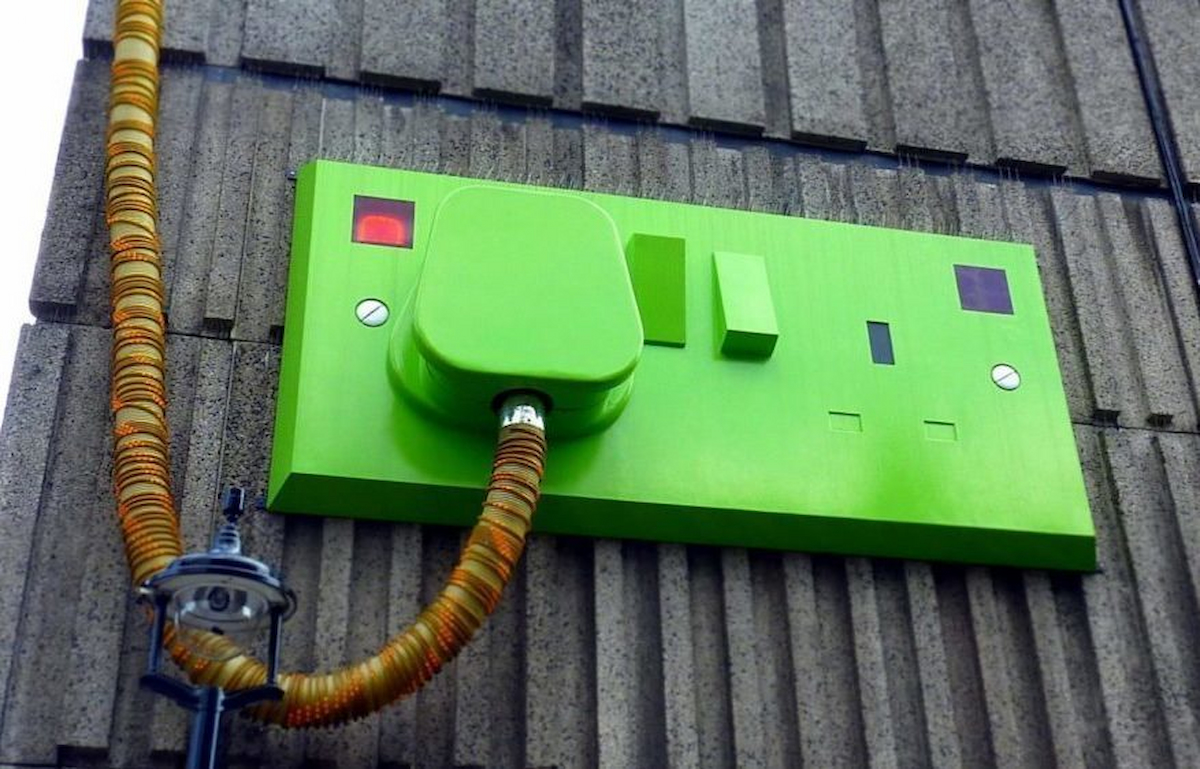One of the common concerns frequently raised around electric vehicles is that of housing – where will people in flats and terraced housing be able to charge? And it is a valid concern. With many British streets already narrow, parking space is competitive, with finding a spot near your house a challenge. Adding to that, the rarity of on-street chargers is rife for anxiety over being able to charge your car.
However, I wanted to explore some of the alternatives available. Focusing on the time the car is parked at home is only half of the picture – there’s always a destination at the other end which often gets overlooked. Could at-work chargers be the solution for those without a drive? Equally, how many people who don’t have a drive actually own a car in the first place?
This article will explore a few common worries about EV ownership.
- How many people own cars without access to a driveway?
- Could you commute using public charging?
- How many times would you need to charge away from home in a week?
The question isn’t so much about “can I charge my car on-street”, but more “do I need to?”.
How many people don’t have a driveway?
Before we get stuck into public charging, I wanted to understand the amount of people this situation actually affects.
In the UK roughly 32% of people live in detached homes, 25% semi-detached, 26% in terraced houses and 14% in apartments.
| Detached | Semi-Detached | Terraced | Flats | |
|---|---|---|---|---|
| Population % | 32% | 25% | 26% | 14% |
This varies based on location, naturally – city centres will see higher rates of apartments, and Northern towns see a higher proportion of terraced housing, but for sake of ease let’s take the UK average for now.
Most of those living in detached or semi-detached houses will have access to some sort of driveway, accounting for 57% of the country. That leaves around 43% of the country without the ability to charge at home.
In 2019, the population of UK adults over 18 is around 44 million. Those are split over 27.6 million households – an average of 1.6 persons per household.
So that leaves us with around 43% of adults in the UK who don’t have access to a home charger, or around 19 million people (some very rough rounding here to make it easy to follow!) split over ~12 million households.
However, this doesn’t give us the full picture. Certain households are more likely to own a car than others. Let’s dig into the data a bit more to get a more accurate idea of who owns what..
If you would like to skip to the summary, click here.
How many people don’t have a driveway who own a car?
So we now have around 12 million households that lack the access to install their own domestic charger.
But how many of these households actually own a car?
There are two questions to answer here:
- What is the average car ownership rate overall?
- What is the average car ownership rate of people in flats/terraced houses?
It’s hard to accurately pin down housing types and population types by city, but I would estimate that car ownership levels are lower in cities than in rural areas. I.e. those living in terraced housing and flats are located in cities, who would traditionally see lower car ownership rates than the national average. For now, I’m going to take a broad UK average and accept that figures will be slightly higher as it’s taking into account those who live in more rural areas who may have higher car ownership rates.
What is the average car ownership rate?
On average a household has 1.2 cars per household.
However, there is an assumption here that people who live in a flat or terraced house own cars at the same rate as those living in semi-detached and detached houses. It may well be that those living in more rural and suburban areas own 2 cars, which is bringing the averages up.
So, what is the rate of car ownership of the 43% who don’t have access to a driveway?
How many people in flats own cars?
This will, of course, vary by region and by city.
For example, we saw that in London car ownership per household is 0.8 – down from the 1.2 national average.
In Glasgow, nearly 73% of the housing is flats, far higher than the UK wide average of 14%. Car ownership is far lower at 0.6 per household – lower than even London.
Sadly there is no clear source on car ownership rates by housing type, so we will need to do some more rough calculations.
According to the ONS in 2018, those who owned their own home were far more likely to own a car. Here, we’ve defined “car” to be at least one car or van, and reports include those who may have multiple vehicles.
| Rent | Own | |
|---|---|---|
| Occupancy | 35% | 65% |
In terms of population split, around 65% of people currently own their own home, with 35% of people renting.
| Tenure | No Car | Car |
|---|---|---|
| Owned | 10% | 90% |
| Private Rented | 45% | 65% |
| Social Rented | 54% | 46% |
- Owned – Either outright, or owned with a mortgage
- Private Rented – rented from a private landlord
- Social Rented – rented from a local authority such as councils or housing associations
We now need to cross-reference this with housing type to understand what car ownership may look like in each sector. This data is also only available for England, so take it with a pinch of salt as Scotland, Wales and NI may have slightly different housing types not reflected in these numbers. We’re looking for broad trends here, rather than watertight data.
| Tenure | Flats | Terraced | Semi-D | Detached | Bungalow | Total |
|---|---|---|---|---|---|---|
| Owners | 8% | 26% | 30% | 25% | 10% | 100% |
| Private Renters | 37% | 37% | 16% | 5% | 4% | 100% |
| Social Renters | 45% | 25% | 18% | 0% | 12% | 100% |
So we can now see the differences appearing. As an example, out of 100 people who own their own home, only around 7 of them will own a car without access to a driveway.
To explain this further, of these 100 homeowners, only 8 live in flats, and 90% of those 8 people will also own a car – around 7 individuals total.
It’s far more likely that those who own their own home will be living in a house. Those most likely to own a car (home owners) are the least likely to live in a flat.
In comparison, around half all renters will not have a car and also make up 92% of flat occupants.
So, while it’s hard to deny that living in a flat is frustrating if you own an EV, far fewer flat occupants are likely to even own a car in the first place.
However, if we combine that with terraced housing, the charging infrastructure issue becomes more prevalent. We assumed earlier that both flats and terraced housing are going to encounter on-street charging issues far more than detached properties. Let’s group these into driveway accessibility:
| Tenure | No Drive (Flats, terraces) | Drive (Semi-detached, detached, bungalows) |
|---|---|---|
| Owned | 35% | 65% |
| Private Rented | 75% | 25% |
| Social Rented | 70% | 30% |
E.g. 65% of people who own their own home have access to a driveway, while three quarters of people renting do not have access to a driveway.
Now let’s bring in the car ownership stats alongside.
| Tenure | No Drive | Has Drive | No Car | Car |
|---|---|---|---|---|
| Owned* | 35% | 65% | 10% | 90% |
| Rented** | 72% | 28% | 50%** | 50%** |
**Combination of social rented and private rented.
So here we can see that 72% of those renting do not have a drive, and 50% of them will likely have a car. Of those who own their own house without access to a drive, terraced housing is the main concern – not those who live in flats.
Okay, so how does this compare to the population at large? Let’s try and put some faces to those percentages and bring all this data together.
Summary – How many people who own cars don’t have access to a driveway?
We have 100 people.
65 of them own – either outright or with a mortgage, and the other 35 rent, either privately or through an association.
Out of 65 people who own, 58 (90%) of them own a car.
Of those 58 who own a house AND a car:
- 5 live in a flat
- 15 live in a terraced house
- 17 in a semi-detached house
- 15 in a detached house
- 6 in a bungalow
So, out of 58 people, that’s 20 who live somewhere with a car but don’t have access to a driveway.
For those 35 who are renting, just 17 (50%) of them will own a car:
- 7 will live in a flat
- 5 in a terraced house
- 3 in a semi-detached house
- 1 in a bungalow
So that’s another 12 individuals who own a car but don’t have access to a driveway.
How many people who own cars don’t have access to a driveway for EV charging?
In summary, out of 100 people, 75 people own a car, 32 of which don’t have access to a driveway for charging. The majority of that 32 live in a terraced house, with a minority in flats.
Not being able to charge will therefore affect around a third of the population, with the other two-thirds more likely to have access to off-road charging.
So where can they charge, if not outside their house? Let’s look at a real world example.
Sources:
- Car ownership by housing tenure
- Flats/houses by housing tenure
- https://www.gov.uk/government/statistics/english-housing-survey-2018-to-2019-headline-report
- https://www.statistics.digitalresources.jisc.ac.uk/dataset/accommodation-type-car-or-van-availability-number-usual-residents-aged-17-or-over-2011
Where can I charge if I don’t have a driveway?
At Work
Thanks to the Benefit in Kind (“BiK”) tax breaks offered by the UK government, it’s far more appealing financially for company owners to purchase EVs, either for themselves or as company cars to their employees.
There are a few benefits for a company owner to install charge points:
- Reduce carbon footprint and meet sustainability goals and improve the public image
- Reduce fleet costs – on average a business can save £1,000 per 10,000 miles travelled with electric fleet vehicles vs petrol, as well as reduced BiK payments
- Up to 75% of installation costs contributed by the WCS
- Seen as a perk to employees
How much does it cost to install a charger on business premises?
The government is offering a £350 per socket grant, up to a maximum of 40 sockets. No existing EV is needed. This means a business can claim up to 75% of the total cost of installation and can be installed for the use of visitors, staff or fleet.
These can cost from £1,500 for a 7kW unit up to £5,000 for a 22kW and increasing up from there for rapid charge 50kW units. Businesses can charge for the electricity used – and as such this can provide an additional revenue stream to cover installation costs.
The Workplace Charging Schemes are gaining pace, with 18,000 installed in 2017 and 22,000 in 2018. (Data for 2019 not available). This relies on business owners paying for the installation, but with up to 75% of the costs covered by a grant and a possibility of charging for the infrastructure, I hope to see these increasing in installation speed into 2021.
Local Superchargers
The number of rapid chargers is increasing, with over 9,000 installed as of December 2020, up from 6,500 in 2019.
A rapid charger is generally any charger capable of rates above 25kW, with these most commonly over 50kW. As we saw in the example below, these can charge a Nissan Leaf to full charge in around half an hour. While this is certainly slower than a petrol refill, we’re seeing them be installed in locations you would normally stop for a short period anyway – supermarkets, larger petrol stations and motorway services. A typical motorway service stop is 20 minutes, which is plenty of time to add 50+ miles to any car capable of fast charging.
Supermarkets
Similar to the workplace, local supermarkets are a sensible location away from the home for charge points.
Already with large amounts of car parking capacity, and shoppers spending over 30 minutes doing a large weekly shop, being able to top up your car at the same time is a no-brainer. Indeed, many petrol stations are located at supermarkets already, so being able to charge up without having to fill up with fuel as an additional task is a bonus.
Asda currently has the most charging infrastructure (July 2020) installed with over 200 locations nationwide, or around 20% of their total stores. Tesco has announced a deal with Pod Point and seen even more stores in the past few months have chargers installed, and we expect this to continue into 2021 and beyond.
71% of these chargers are 7kW type 2 chargers, which are free to use and useful to top up charges but not for a full recharge. Just 4% of these chargers are rapid, most of which are located at Lidls. With most shops taking under an hour to complete, we hope to see more rapid chargers rolled out in the future as a suitable alternative to at-home charging.
Curbside Charging Options
Finally, I want to highlight some of the curbside charging options available that are being rolled out by councils across the country.
Again, we are in the early days of this technology but I expect to see this cropping up more and more in the next year. This is the technology which will allow those living in terraced housing to charge overnight – the holy grail of EVs!
Lamppost
In our example below, we discover that lamppost charging is being deployed on terraced streets in Reading. Cities also adding this infrastructure include: London, Coventry, Amersha, Brighton, Portsmouth, Reading, implemented by companies such as char.gy and CityEV.
Low Level Kerbs or “Connected Curbs”
One of the most common complaints about on-street charging is that it will be messy – cables trailing across pavements or between parked cars. Lamppost charging doesn’t really fix this problem, which is what a lot of the alternative low level kerbs seek to address.
Often made from recycled tyres, these “Armadillos” sit at curb height and provide a location for you to plug in the charger.


Companies: Connected Kerb
On-Street Cabinets
While not yet up and running, companies such as Virgin Media are planning to install chargers into existing street furniture such as broadband cabinets. The first units should be up and running in early 2021. There are limited details on pricing or charge speeds, but I would guess these are also 3kW or 7kW chargers designed for overnight usage.
A Real World Charging Example
Let’s take an example. Meet Tom who lives in Reading.
Tom commutes 20 miles a day (10 miles there and back), just under the national average of 23 miles. He owns a Nissan Leaf with a 36kWh battery which has a real world range of around 150 miles in winter months. In reality, he’ll get more than that, but let’s take a worst case scenario that makes the maths a bit easier.
Tom lives in a Terraced house on Hatherly Road which he has a mortgage on, and works at a small business on an industrial estate in Henley on Thames. This is over an hour away by public transport or just a 20-minute drive.
Twice a week he stops at the Tesco on the way home to do a food shop.
He doesn’t like to let the battery get below 20% charge, keeping 30 miles available just in case.
That gives Tom 120 miles a week without needing to charge. He doesn’t have a driveway so has limited options. He can either plug in from his house, though this could mean a cable running across the pavement, or could he live with public chargers?
With a commute of 20 miles and a range of 120, he can comfortably do a weekly commute without needing to charge. However, this leaves him short of his 20% target and means he’ll likely need a full charge once a week if he wants to use the car outside of commuting.
So, what are Tom’s options?
1. Tom Charges Near Work
At the Tesco in Henley on Thames, there are 4 free to use charging points. However, these are 7kW chargers, and pretty slow. If he spends 1 hour a week shopping, it would add around 21 miles per hour to his range. Better than nothing, but it’s not going to be enough unless he charges here every day.
Down the road from Tesco, there are 3 x BP Pulse chargers which can charge up to 50kW. This will do a full charge in ~40 minutes, adding 140 miles per hour. If his battery is at 50% and he wants a top up, it will do so in around 20 minutes. Plenty of time to charge on his lunch break once a week while going for a walk or finding lunch nearby.
There is a risk here of chargers being busy, however, using a tool such as Zap-Map lets you see if the charger is in use before you arrive and check that it’s operational.
The downside is that these aren’t free, and would cost around £9 for a full charge based on 25p per kWh (this is reduced to 15p if you have a membership, making a full charge £5).
There are a few other chargers available in Henley, one 7kW at Waitrose, 2 x 7kW at David Bray Motor and 3 x 22kW at the Badgemore Park car park, but if he’s working in town these are a bit out of the way.
This ignores the possibility of having a charger at work which removes all of these issues – but more on this later. As it stands his options are possible but limited. He can charge slowly at Tesco, or opt for a rapid charger which would top him up in under 20 minutes, but means a special trip once a week.
Let’s now look at charging near his home.
2. Tom Charges Near Home
From his house on Heatherly road there are a few chargers nearby:
- 3 x 7kW chargers at the hospital
- 8 x CityEV lamppost chargers
- 2 x BP Pulse chargers – 50kW and 150kW
As expected, charging at home is a bit more of a pain due to terraced streets. Interestingly the 8 lamppost chargers on a terraced street near him, charging at 3kW. While slow, if he can park near one of these overnights that will still give him a full charge. However, they’re not on his road and are a 15-minute walk away, assuming he can get a spot. Not ideal. Hopefully, the council will install them on his street soon, but for now, he’ll have to rely on public chargers.
His best bet is the BP Pulse chargers. These are on a main road at a small supermarket / petrol station that he drives past on his way home. With these rapid chargers, a 30 minute stop while picking up some food will recharge the car to full without needing much of a detour.
A week with Tom
We now know that there are public chargers near his work and home, but none for him to charge at home “passively”.
So if he wants to charge at public stations he has a few options. One is to use the slow charging at Tesco, which would add some charge for free while he shops. He’s going there anyway and it’s free, so he might as well do it.
Then once a week he’ll use the BP Pulse fast charging, either the one near his work or at the retail park on his way home to give it a full boost.
What does this look like in reality?
Tom starts on Monday with 50% charge, around 75 miles.
| Day | Action | Charge Change | Range Left |
|---|---|---|---|
| Monday | Commute to work | -10 | 65 Miles |
| Charges at Tesco 1 hour | +20 | 85 Miles | |
| Commute Home | -10 | 75 Miles | |
| Tuesday | Commute | -20 | 55 Miles |
| Wednesday | Commute to Work | -10 | 45 Miles |
| Commute Home | -10 | 35 Miles | |
| Charge at Reading Rapid Charger for 30 minutes | +70 | 105 Miles | |
| Thursday | Commute | -20 | 85 Miles |
| Friday | Commute | -20 | 65 Miles |
Here we see that the local rapid chargers are vital and without them, charging infrastructure would be a challenge. However, it is still perfectly doable.
With 3 x 50kW chargers also a 5 minute walk away from Tesco in Henley, there’s a possibility to do the bulk of charging after work when shopping and easily get a full charge in under 40 minutes instead.
Could you live with an EV without a driveway? In this imagined example, yes, relatively easily. However while the charge infrastructure is there – it’s hard to deny that it will require some behavioural changes and some inconvenience. If Tesco had faster chargers installed, then this would be much easier to fit into his existing weekly routine.
Have a look at both on Zap-Map to see what is available near your place of work: https://www.zap-map.com/live/
Tom Charges With a Work Charger
The obvious solution here is at-work charging. With 68% of people commuting by car, thousands of cars are sitting in office car parks every day doing nothing.
Let’s re-run Tom’s example assuming he has a 7kW charger at the car park he uses for work. Most light industrial units have the 3 phase electricity required for up to 22kW charging, but 7kW are far cheaper to install.
Assuming his car is parked at work for 6 hours a day, he has the potential to add 120 miles per day to the battery, meaning he only needs to charge once a week without changing behaviour at all – the car is still sat parked.
Even with a limited number of chargers available, he can charge 1 out of 5 days while at work and achieve a full battery, without needing to worry about at-home charging.
Conclusion
So, in this article we’ve looked at the real world implications of owning an EV without a driveway, and what a “normal” person’s commute might look like.
Tom’s example highlights a few issues I have with the current narrative and fear around at-home charging. Firstly, even in this worst case scenario (150 miles range is pretty conservative) he could live with an EV and charge away from home without too much change to his routine. There are 2 or 3 rapid chargers near his current commuting route he can utilise – a slight inconvenience but more than possible.
Secondly, the concerns around deploying at-home chargers are easily negated by providing charging near or at work. A relatively inexpensive at-work 7kW charger would provide plenty of charging potential to charge without any disturbance to already crowded residential streets. While of course 2020 has seen a reduction in commuting, as patterns return in 2021 workplace chargers will provide additional reassurance and confidence in having an alternative charging location.
Thirdly, the stats provided at the start of the article were to highlight how the concerns around on-street charging affect a minority of car owners. Those most likely to own a car are most likely to have their own driveway to. Of course we need to improve infrastructure for those living in flats and terraced houses, but we shouldn’t let this dominate the narrative and discourse around EV-hesitancy when it affects a minority of car owners.
There are a few summary points to take away:
- Those most affected by a lack of driveway are the least likely to own a car
- Those in terraced housing are most likely to own a car but not have easy access to at-home charging
- Curbside charging is increasing in availability but has a long way to go to be reliable
- At-work charging offers much bigger gains and removes all at-home charging issues
- Reliance on local rapid chargers is possible thanks to fast charging speeds, but will heavily depend on your location







